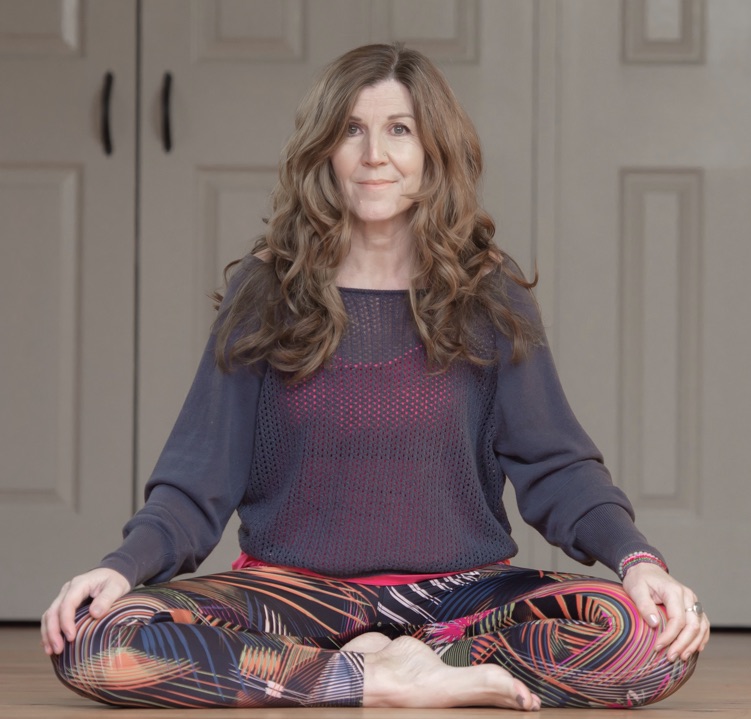
there really is no life experience to which yoga cannot bring benefit...

there really is no life experience to which yoga cannot bring benefit...
October is menopause awareness month and in yoga circles there is a great deal of talk about how the practice can help to ease this natural transition. The menopause, and the period that precedes it, known as the perimenopause, can last for several years. It’s not something that most women can ignore because in around 80% of cases the known indicators, signs and symptoms can have an extremely debilitating effect on one’s ability to lead life as before.
But it's important to remember that this is a natural stage of life, one of many, and if we follow the path of yoga then our practice will be there to support and accompany us through all of the many stages, including this one. The menopause is the passage through the child rearing years and the emergence into the next stage of life and it can be welcomed and embraced. But the troubling symptoms that it may bring need to be managed; they cannot be cured. This is a journey when women need to travel through the difficulty and emerge glowing at the other end. There is no diversionary route.
Common issues and how your yoga practice can help
Hot flushes
Changing hormone levels in the body and the interrelation of all bodily systems with each other can lead to erratic temperature changes causing hot flushes. A regular yogasana practice to keep the body supple and free from energy blockages, will ensure that a good flow of prana is delivered to all bodily systems. This will assist in regulating your physiology and body chemistry and can help enormously. Ayurvedic remedies, routines and practices for pitta, which gives rise to heat, may also be appropriate.
Anxiety
The lack of stability through the bodily systems that can be generated by the changes that begin in the perimenopause and continue into menopause can give rise to an increase in vata, which in Ayurveda is the principle of movement. This can lead to anxiety that might be either free floating or worries that have a specific focus. Bringing balance to the physical body through yogasana is the first stage to addressing this because it is more effective to work from the gross to the subtle. Following yogasana practice, there are calming yoga breath practices that will help anxiety, followed by relaxation and meditative practices that can help to restore equilibrium in the mind.
Insomnia
Following the same logic and working from gross to subtle, yogasana is the foundational practice to help restore the bodily balance here. On a purely practical level, it is also extremely unrealistic to expect to meditate and find the peace and harmony that gives rise to the settled state of mind conducive to sound sleep, when the body may feel uncomfortable or unbalanced. Insomnia begins during the day with the activities and events that take place and get carried forward to the evening when we then begin to process them. Develop a regular and balanced routine to help set yourself up during the day for a peaceful sleep at night. Yogasana, pranayama and relaxation or meditative practices will be highly beneficial. Ayurvedic abhyanga practice which is an easy self massage, that can be done in whole, or in part, (to just hands and feet), is very effective at settling down the nervous system at bedtime and calming the vata dosha which can be aggravated by all of the bodily change that is taking place.
Headaches and palpitations
These are just two of some of the other physical symptoms that can be troublesome. In line with the recommendations for hot flushes, all physical symptoms will be improved by bringing balance and regulation to the body through yoga practice. There is a great deal of change taking place and a corresponding balanced and harmonious routine will go a long way to bringing the stability that will help to counteract it.
Sexuality
This can be a difficult time for women, it is a transition that marks the end of the fertile child bearing years and can have a negative impact on sexuality and self esteem. This is a key time to focus on the yama and niyama, to give quiet time for study of yoga philosophy and to re-evaluate your yoga as an overall philosophical modality and not just a physical movement practice. With or without children, it is the self that we come to experience. Spending time to consider the limbs of yoga (ashtanga) and perhaps seeking out a teacher who is integrating the philosophy as well as the movement will help to develop your practice to the next level. This will undoubtedly have a positive effect on your self image, peace of mind and sense of purpose, that will filter through into all relationships whether sexual or not.
Don’t forget your partner and family
Throughout all of this, remember that your partner and your family may be experiencing your behaviour as different and may have their own difficulties to address in respect of that. Explain what you are going through, be honest, practice satya (truth). They will undoubtedly benefit from knowing what you are feeling and will then be able to support you in meaningful ways. This support alone will help to combat some of the negative symptoms of menopause.